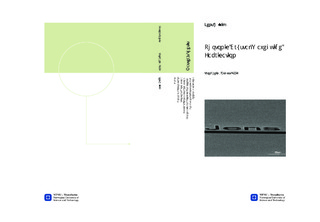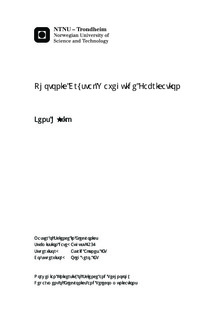| dc.description.abstract | This research is entirely devoted to the study and fabrication of structures with periodic dielectric constants, also known as photonic crystals (PhCs). These structures show interesting dispersion characteristics which give them a range of prohibited frequencies that are not allowed to propagate within the crystal. This property makes them suited for a wide array of photonic-based components. One-dimensional photonic crystals are already commercialized and are of widespread use in for example thin-film optics, and two-dimensional PhCs are available in the form of photonic crystal fibers.Much work is being done on the analysis of photonic crystals and their application in various photonic components. In designing any photonic crystal component the properties of the crystal must first be understood and analyzed. By using frequency-domain simulation software we have studied the properties of bulk photonic crystals and designed the ideal structure for confining light of any design wavelength within a three-dimensional photonic crystal slab.Through simulations, the ideal periodicity of the PhC has been found along with its optimal geometry for waveguiding purposes. The study was then extended to three dimensions and the optimal thickness of the PhC slab was found. By using these determined values we were able to properly confine light inside a defect in a photonic crystal structure. This phenomenon allowed us to briefly examine the use of a photonic crystal as a waveguide. This research was then continued by attempting to fabricate such a device. Methods entailing how to create a silicon-on-insulator wafer through plasma enhanced chemical vapor deposition were developed. Profilometry, refractometry and ellipsometry were used to characterize the quality of the SOI wafer. A surface roughness between 1.5-3.5 nm was found. The losses of the amorphous silicon was attempted to be measured through ellipsometry, but the ellipsometer was found incapable for loss meassurements. Better testing methods must therefore be developed.The PhC waveguiding structure is formed thorugh electron-beam lithography, and various thicknesses of photoresist are tested and characterized. Furthermore, various materials were attempted as an etch mask. Polymethyl methacrylate, $SiO_2$, and chromium were all utilized, where only the latter showed good enough selectivity for silicon etching. This lead to using both chromium and $SiO_2$ as the mask of choice. Several etching methods were tested. Both standard wet etching, room-temperature reactive ion etching recipes as well as cryogenic inductively coupled plasma reactive ion etching recipes were employed. Dry etching was found to be of insufficient quality, while the complete isotropy of wet etching rendered it impractical for fine structures needed for a PhC waveguide.The final solution which allowed the formation of the photonic crystal was a stacked structure, using both chromium, oxide, and PMMA throughout the etching process in order to achieve the wanted results. The PMMA was used as an etch mask to imprint the pattern in the oxide layer. The oxide layer was in turn used as an etch mask to imprint the pattern into the chromium, and the chromium served as the final mask to be used during cryogenic silicon etching. The cryogenic silicon etching recipe was characterized and shown to be sufficiently anisotropic as well as having a rather high maximum etch depth. The recipe show an unwanted formation of so-called silicon grass, and a high sidewall roughness is observed. Finally, a complete PhC waveguiding structure with both a grating, a taper, and a silicon waveguide is fabricated. Although they require more work to be optimized, the methods presented in this thesis provide the basis for fabricating a multitude of optical components, not only PhC's. | nb_NO |

